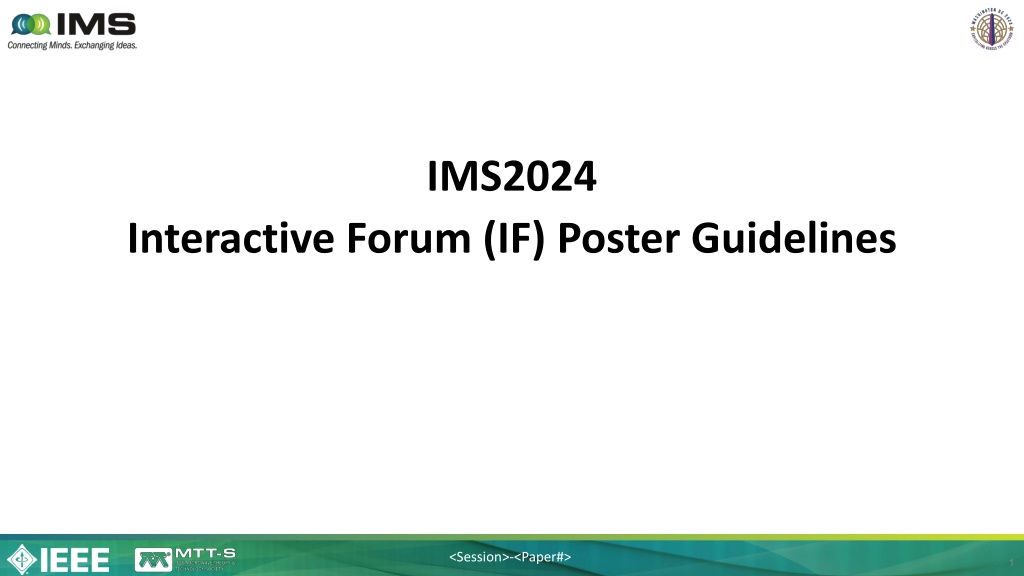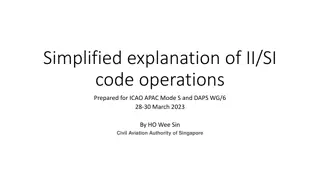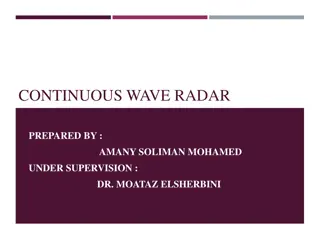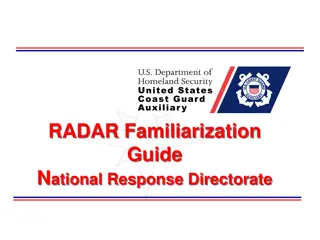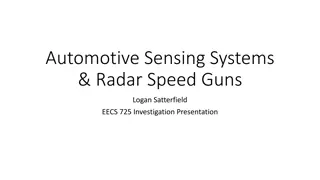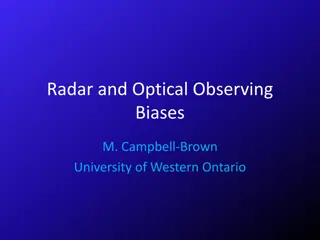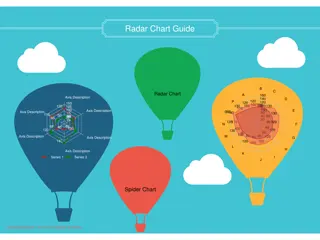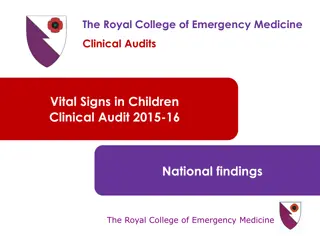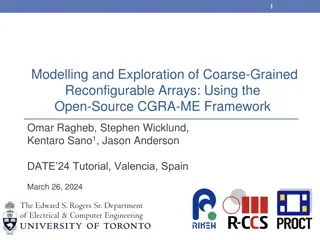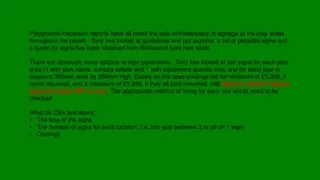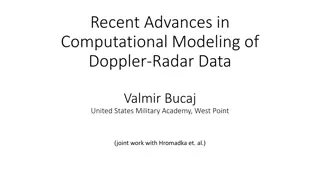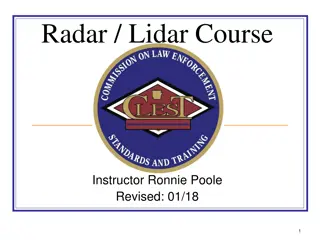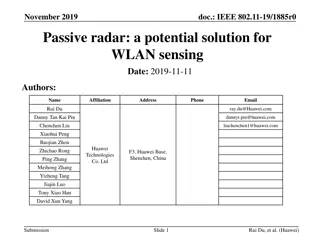Development of Reconfigurable Low Cost Multi-Mode Radar System for Vital Signs Detection
This project focuses on creating a reconfigurable radar system for contactless vital signs monitoring. By utilizing a hybrid approach of UWB and CW modes, the system aims to achieve high sensitivity and resolution with minimal size, weight, and power consumption. The innovative design allows for multi-mode operation, offering diverse applications in healthcare and remote monitoring.
Download Presentation

Please find below an Image/Link to download the presentation.
The content on the website is provided AS IS for your information and personal use only. It may not be sold, licensed, or shared on other websites without obtaining consent from the author. Download presentation by click this link. If you encounter any issues during the download, it is possible that the publisher has removed the file from their server.
E N D
Presentation Transcript
IMS2024 Interactive Forum (IF) Poster Guidelines <Session>-<Paper#> 1
Instructions on IF Poster Preparation Your Interactive Forum (IF) presentation(s) at IMS2024 will consist of an electronic poster on a horizontal monitor, using the provided computer. A single, electronic poster discussing the participant s research in broad strokes. This poster should include a penta chart, which covers the primary motivations, insights, and results of the project. Participants are responsible for preparing and bringing their poster to their specific IF session on a USB drive. IMPORTANT NOTE: IF Presenters MUST check in with the Session Chair(s) IMPORTANT NOTE: IF Presenters MUST check in with the Session Chair(s) at the Check at the Check- -In Area at least 15 minutes prior to the start of their session. In Area at least 15 minutes prior to the start of their session. <Session>-<Paper#>
Penta Chart A penta chart provides a concise summary of a paper/project by displaying principle information needed to understand the project in a clear and easy-to-read manner. A penta chart example is provided on Slide 4. The entire poster should be prepared in landscape 16 x 9 format in PowerPoint or PDF format. The penta chart is divided into five sections: Status quo Background and motivation, current state-of-the-art. What problem are you trying to solve, or what improvement are you trying to make? New insights Describe what s new about your approach. Why should people care? Description - Main achievements, concept, how it works, assumptions and weaknesses. Quantitative impacts What were your results, and how do these compare with existing technologies/techniques? Proposed concept goal - Final product of your work. Where is this leading, and what are the next steps? <Session>-<Paper#>
Development of a Reconfigurable Low Cost Multi-Mode Radar System for Contactless Vital Signs Detection F. Quaiyum, L. Ren, S. Nahar, F. Foroughian, A. E. Fathy Contactless Vital Signs Monitoring QUANTITATIVE STATUS QUO IMPACT Lower Band (2-4 GHz) SFCW mode. Lacks sensitivity, useful in through wall applications Higher Band (7-9 GHz) SFCW mode for higher sensitivity EXAMPLE EXAMPLE A hybrid approach required: UWB for short range heart rate detection and imaging, CW for long range vital signs Traditional hybrid systems bulky, expensive and difficult to control DESCRIPTION CW mode for long range vital signs detection The transceiver is mainly composed of three parts: Waveform Generator Two channel DDS board where each channel can be independently configured Capable of providing either a CW signal or SFCW signal CONCEPT GOALS Multi-Mode Radar System featuring: + UWB Radar Hybrid Radar CW Radar NEW INSIGHTS Minimal Size, Weight, and Power (SWAP) capable of high-resolution, and high- quality imaging PROPOSED Microcontroller Configures the waveform generator to perform in CW or in SFCW mode Controls the SPDT switches enabling center frequency reconfiguration Multi-Mode Operation with Reconfigurability UWB Mode Short-range SAR operation Center frequency shifting for higher sensitivity CW Mode Operation Long range remote triage Interferometry functionality using dual CW operation Low cost due to the sharing of components Totally controlled by a micro-controller Microwave Front End Consisting of the Amplifiers, Mixers, Power Dividers and Antennas High sensitivity high frequency operation without the requirement of sophisticated PLL/DDS board <Session>-<Paper#>
